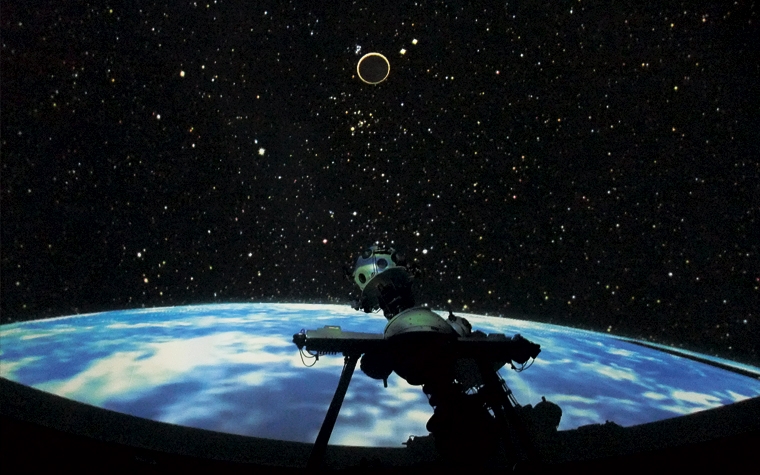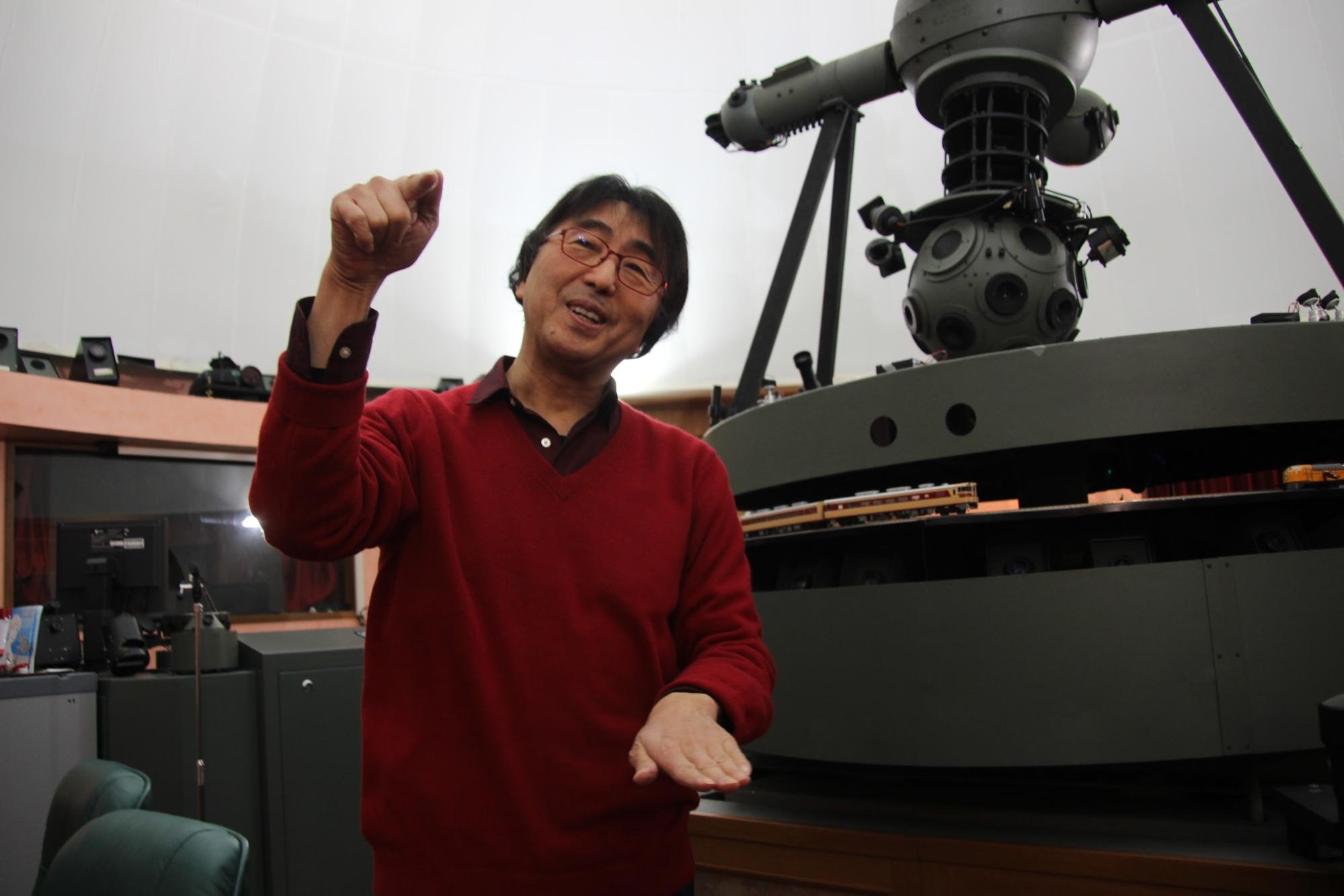
In a pitch black room, Ryo Kasuga talks space as a simulated solar system rotates above my head. Kasuga, however, is no astronomer. He’s a Buddhist monk intent on using the stars to rouse the public’s interest in spiritual teachings.
“The Japanese public have little interest in Buddhism. I don’t think that will improve in the next ten years either,” Kasuga, a tall man dressed in jeans and a red jumper, told me as we stood in the small planetarium located next to his temple.
Kasuga’s Gingaza planetarium, established in 1996 and cluttered with plastic dinosaurs, model ships, and photographs of Japanese astronauts, appears out of the ordinary compared to a regular observatory. The tech found in his planetarium is cobbled together via donations from other planetariums who no longer need their equipment.
Kasuga himself looks little like a stereotypical Buddhist monk with shorn head and spiritual robes, but he hails from a generation of monks and heads up the Shoganji Temple, found in a small sleepy town on the outskirts of Tokyo.
For Kasuga, the aim is to expand the public’s interest in both space and Buddhism. The monk prides himself on doing what other planetariums and conservative Buddhist temples do not do: encourage awareness and critical thinking.
There is actually no link between space and Buddhism, asserted Kasuga. The planetarium is instead simply a novel medium through which he attempts to pique the curiosity of people who wouldn’t usually be interested in Buddhism. “People just don’t come to temples anymore,” he said.

As a child, Kasuga aspired to be an astronomer and took every opportunity to visit planetariums in Tokyo and read up on the sciences in his free time. Parallel to his interests in space, he received Buddhist training from the age of four, and was eventually obliged to give up his interest in astronomy and physics for a place at a Buddhist university. Yet, disapproving of how Buddhism was represented in Japan, he soon left the country to go and pursue a musical career in Italy.
“I thought that Buddhism was fascinating, but I didn’t agree with what the monks and Buddhist temples were doing in Japan. To me, it seemed like they didn’t put much effort into teaching what the Buddha had to say, and just took money from their parishioners,” said Kasuga, who noted that this wasn’t exactly the monks fault per se.
Before and during WWII, religion was closely married to politics, inspiring the belief that the Japanese Emperor was a God among the populace. Disturbed by the repercussions of this ideology on the Japanese people, Kasuga explained that the US administration (the Supreme Commander of the Allied Powers, active between 1945-1952) lifted religious instruction from Japanese schools soon after the end of WWII.
The Shinto Directive was introduced in 1945 by the body in order to prohibit the teaching of elements of the Shinto religion in public schools that might produce militaristic and ultra-nationalistic behaviors in the Japanese populace. According to Kasuga, this actually resulted in today’s religious leaders and the Japanese public having little conception of what….
Keep reading : Click here




